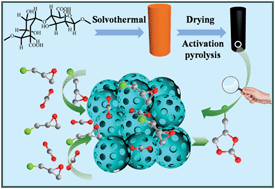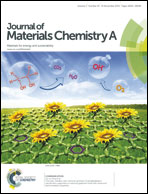Nitrogen-doped porous carbon monolith as a highly efficient catalyst for CO2 conversion†
Abstract
In this work, we report an N-doped porous carbon monolith used for the first time as a catalyst for the cycloaddition of CO2 to cyclic carbonates. It acts as an efficient, single-component, metal-, solvent- and halogen-free catalyst for the formation of chloropropene carbonate from CO2 and epichlorohydrin. The N-doped carbon monolith AA-950 significantly exhibited a high CO2 capture capacity of 16.20 mmol g−1 (298 K and 20 bar) and high conversion of epoxides. A catalytic mechanism has also been proposed based on the basis of DFT calculations. Our findings may trigger interest in the studies of carbon materials for CO2 capture and conversion performance.


 Please wait while we load your content...
Please wait while we load your content...